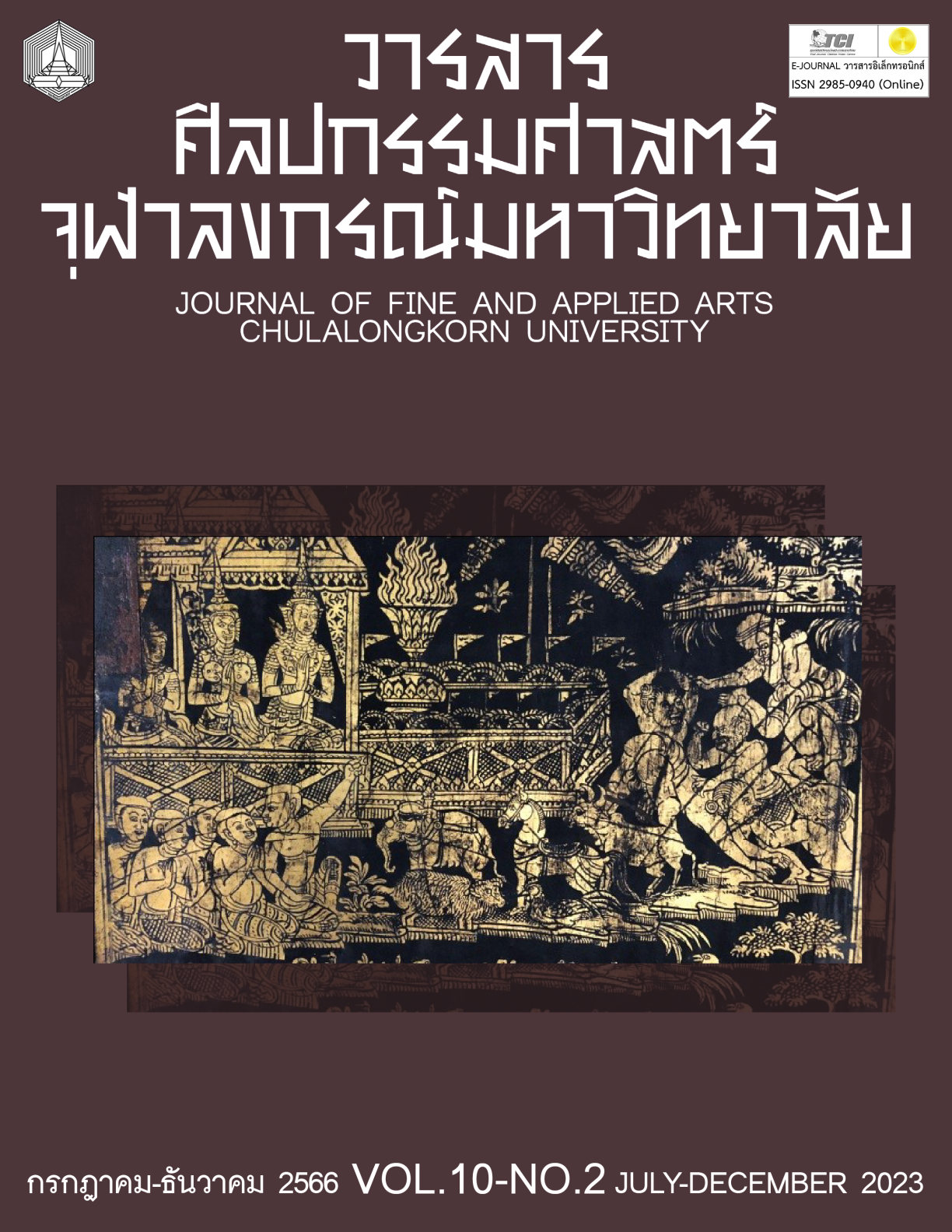FROM DEATH TO MEANINGLESSNESS IN PERFORMANCE ART: IMPERSONAL DESIRES
Keywords:
death, identity, meaninglessness, performance artAbstract
The death of a loved one is often the cause leading us to ponder over death and dying. This present study hence explores the connection between death and meaninglessness – part of the process to creating Performance art entitled “Impersonal Desires”. The objective of this study is twofold. Firstly, it examines the approach in which the process of creating works of art from the artist's paradigm in artistic practice that creates the idea of meaninglessness. Secondly, it explores the concept of death in relation to meaninglessness – the central idea leading to the creation of this performing art. The theories, concepts, and forms of Fluxus art, Performance Art and Installation Art have been scrutinized.
This study focuses on presenting the research process, starting from the question over the connection between death and meaninglessness. The procedures are as follows: 1) writing a personal reflection to examine internal thoughts and feelings, 2) reviewing related literature, 3) creating creative performing art and 4) analyzing primary data which leads to the concept of this creative performing art. This study hopes to provide an approach to creating an artwork from the basis of conducting an experimental research.
References
Albertazzi, Liliana. “Edmund Husserl (1859–1938).” In The School of Franz Brentano. Nijhoff International Philosophy Series, vol 52, 175-206. Dordrecht: Springer, 1996.
Attig, Thomas. “Relearning the world: Making and finding meanings.” In Meaning reconstruction & the experience of loss, 33-53. Washington: American Psychological Association, 2001.
Blanchot, Maurice. The Space of Literature. Translated by Ann Smock. Lincoln: University of Nebraska Press, 1982.
Bogue, Ronald. Deleuze on Music, Painting, and the Arts. New York: Routledge, 2003.
Curtin, Brian. “Semiotics and Visual Representation.” The Academic Journal of the. Faculty of Architecture of Chulalongkorn University 1 (2008): 51-62.
Duangwises, Narupon. “Ontology. (Object-oriented ontology), concepts, anthropological theories.” https://www.sac.or.th/portal/th/article/detail/287.
นฤพนธ์ ด้วงวิเศษ. “ภววิทยาวัตถุ (Object-oriented ontology), แนวคิด ทฤษฎีมานุษยวิทยา.” https://www.sac.or.th/portal/th/article/detail/287.
Gann, Kyle. No Such Thing as Silence: John Cage's 4'33". Massachusetts: Yale University Press, 2011.
Goffman, Erving. The Presentation of Self in Everyday Life. New York: Doubleday Dell, 1959.
Higgins, Hannah. Fluxus Experience. California: University of California Press, 2002.
Lavoie, Marc E., Roth, Robert M., & Guay, Stéphane. “Posttraumatic stress disorder.” In The neuropsychology of psychopathology, 287-306. New York: Springer Publishing Company, 2013.
Obrist, Hans Ulrich. Ways of Curating. London: Allen Lane, 2014.
Phattaradetpaisarn, Atiphop. The sound of independence, John Cage and Experimental Music. Bangkok: Blacklist, 2014.
อติภพ ภัทรเดชไพศาล. เสียงของอิสรภาพ John Cage กับ Experimental Music. กรุงเทพฯ : Blacklist, 2557.
Rachman, S. “Emotional processing, with special reference to post-traumatic stress disorder.” International Review of Psychiatry 13, no. 3 (2001): 164-171.
Rogers, Carl. On Becoming a Person: a Therapist’s View of Psychotherapy. Boston: Houghton Mifflin Company, 1961.
Sartre, Jean-Paul. No Exit (Huis clos). Translated by Paul Bowles. London: Samuel French, 2010.
Downloads
Published
Issue
Section
License
Copyright (c) 2023 NUTTAWAT SITTI, KAMOL PHAOSAVASDI, KASEM PHENPINANT

This work is licensed under a Creative Commons Attribution-NonCommercial-NoDerivatives 4.0 International License.
ลิขสิทธิ์ของบทความเป็นของเจ้าของบทความ บทความที่ได้รับการตีพิมพ์ถือเป็นทัศนะของผู้เขียน
กองบรรณาธิการไม่จำเป็นต้องเห็นด้วยและไม่รับผิดชอบต่อบทความนั้น






